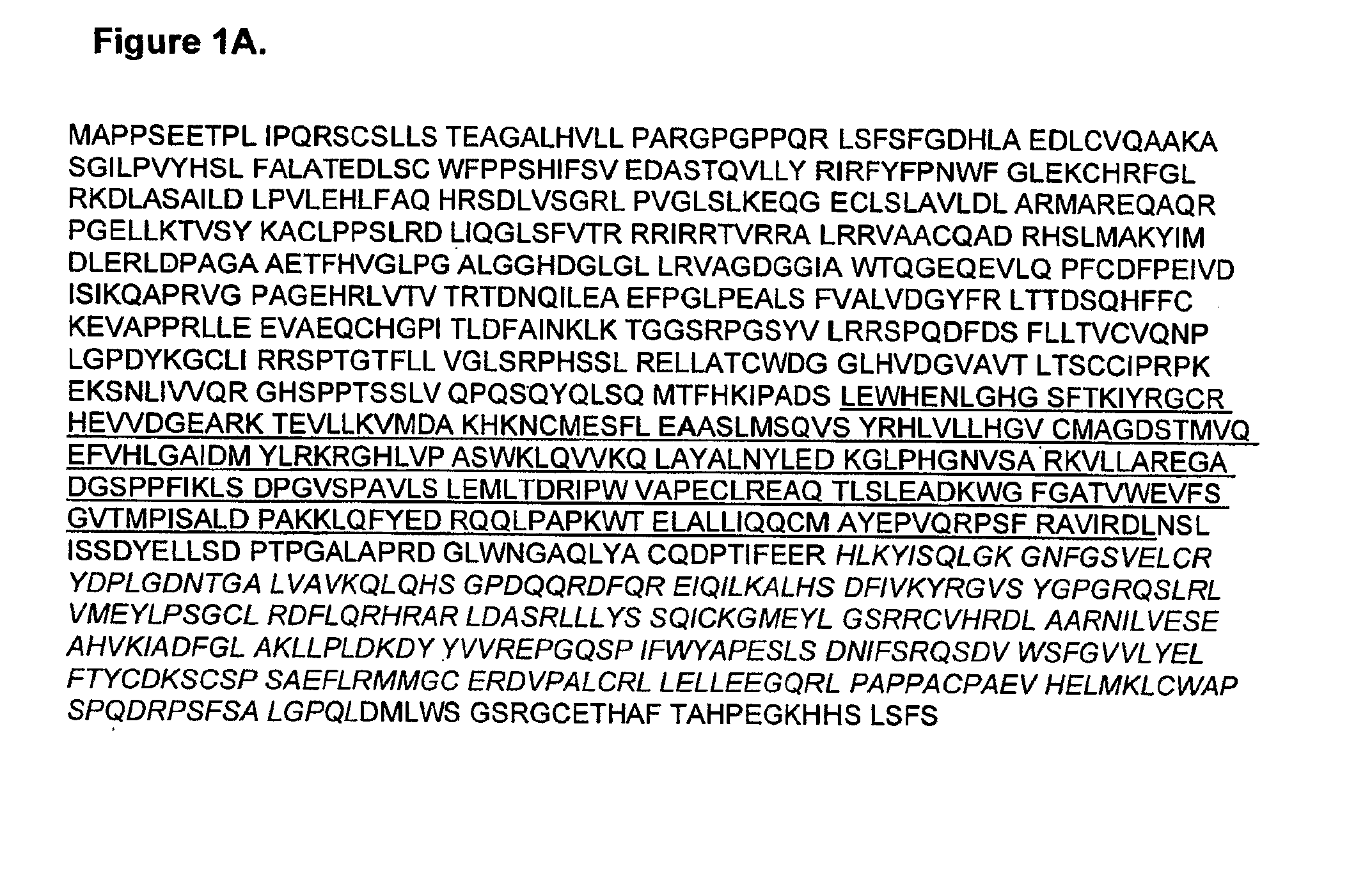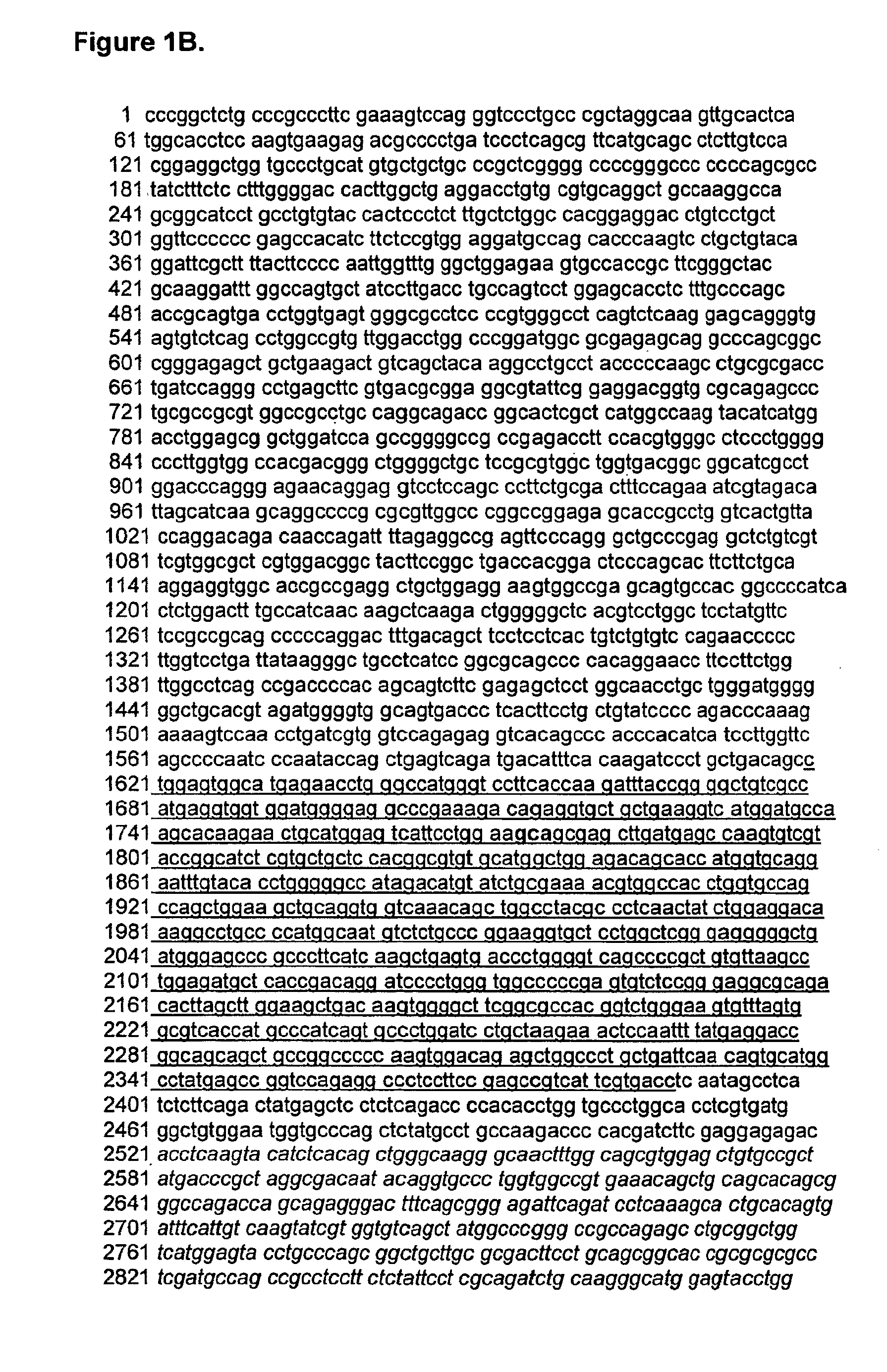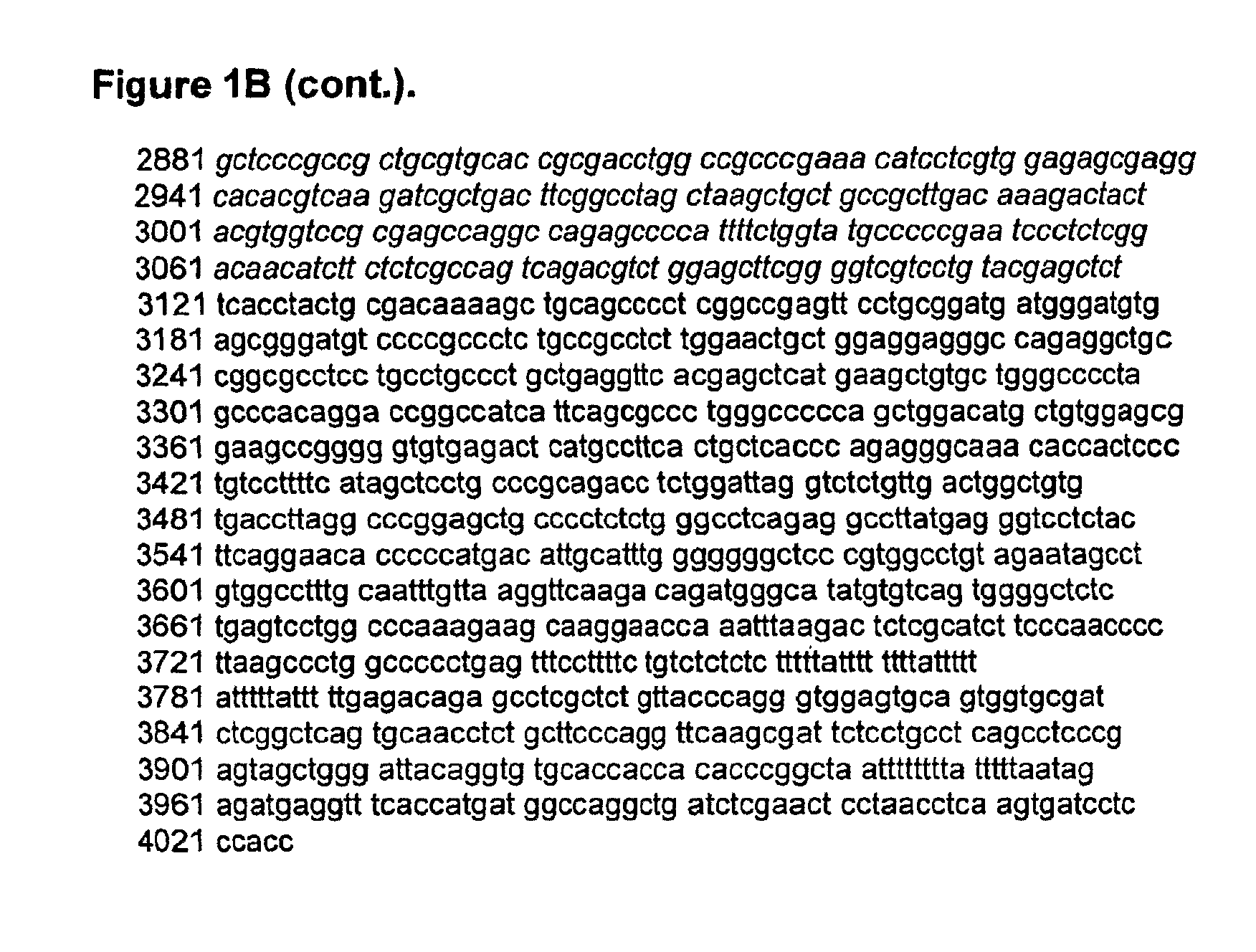Mutant jak3 kinase in human leukemia
- Summary
- Abstract
- Description
- Claims
- Application Information
AI Technical Summary
Benefits of technology
Problems solved by technology
Method used
Image
Examples
example 1
An AML Cell Line Lacking FLT3 or KIT Mutations But Possessing Activated STAT5
[0251]Immunoblot analysis using a phospho-STAT5 antibody was used to screen several human AML cell lines for constitutive phosphorylation of STAT5. Antibodies for immunoblotting were anti-phospho-STAT5 (Cell Signaling Technology, Beverly, Mass.), anti-STAT5, anti-JAK1 and anti-TYK2 (BD Transduction Laboratories, BD Pharmingen, San Diego, Calif.), anti-JAK2, anti-JAK3, anti-phospho-JAK1, anti-phospho-JAK3 (Santa Cruz Biotechnology, Inc., Santa Cruz, Calif.).
[0252]AML-193, GDM-1, CMK, K562 and Ba / F3 cells were obtained from the German National Resource Centre for Biological Material (DSMZ). GF-D8 cells were generously provided by Dr. Orietta Spinelli, Laboratorio Paolo Belli, Bergamo, Italy. All cell lines were maintained in RPMI 1640 supplemented with 10% FCS, 1 unit / mL penicillin G, and 1 μg / mL streptomycin at 37° C. and 5% CO2. Western blotting was carried out according to standard methods, following the W...
example 2
Identification of JAK3 Kinase Activity in an AML Cell Line by Global Phosphopeptide Profiling
[0254]The global phosphorylation profile of kinase activation in the CMK AML cell line was examined using a recently described and powerful technique for the isolation and mass spectrometric characterization of modified peptides from complex mixtures (the “IAP” technique, see Rush et al., supra). The IAP technique was performed using a phosphotyrosine-specific antibody (CELL SIGNALING TECHNOLOGY, INC., Beverly, Mass., 2003 / 04 Cat. #9411) to isolate, and subsequently characterize, phosphotyrosine-containing peptides from extracts of the CMK cell lines.
[0255]Specifically, the IAP approach was employed to facilitate the identification of tyrosine kinases responsible for STAT5 phosphorylation in the CMK cell line. STAT5 is a member of the STAT family of transcription factors. The activated tyrosine kinases typically phosphorylate one or more signal transducer and activator (STAT) of transcriptio...
example 3
Growth Inhibition of JAK3-Expressing AML Cell Line Using a Pan-JAK Kinase Inhibitor and siRNA
[0270]In order to determine whether the detected JAK3 kinase is driving cell growth and survival in the CMK AML cell line, the ability of both a pan-JAK inhibitor, JAK I, and siRNA to inhibit growth of these cells was examined.
JAK I Inhibition.
[0271]JAK I (Calbiochem, San Diego, Calif.) is a potent inhibitor of the JAK family of kinases, including JAK3. To confirm that JAK3 is driving the proliferation of CMK cells, the effect of JAK I on the growth and / or viability of CMK cells was examined. CMK and K562 cells (as a control) were treated for seventy hours with increasing doses of JAK I inhibitor up to 2 micrograms / ml. The number of viable cells was determined with the CellTiter 96 AQueous One solution cell proliferation assay (Promega). Apoptosis was measured with a fluorescent stain measuring annexin V.
[0272]Treatment of CMK cells with JAK I resulted in inhibition of cell proliferation and...
PUM
| Property | Measurement | Unit |
|---|---|---|
| Fraction | aaaaa | aaaaa |
| Therapeutic | aaaaa | aaaaa |
Abstract
Description
Claims
Application Information
 Login to View More
Login to View More - R&D
- Intellectual Property
- Life Sciences
- Materials
- Tech Scout
- Unparalleled Data Quality
- Higher Quality Content
- 60% Fewer Hallucinations
Browse by: Latest US Patents, China's latest patents, Technical Efficacy Thesaurus, Application Domain, Technology Topic, Popular Technical Reports.
© 2025 PatSnap. All rights reserved.Legal|Privacy policy|Modern Slavery Act Transparency Statement|Sitemap|About US| Contact US: help@patsnap.com



